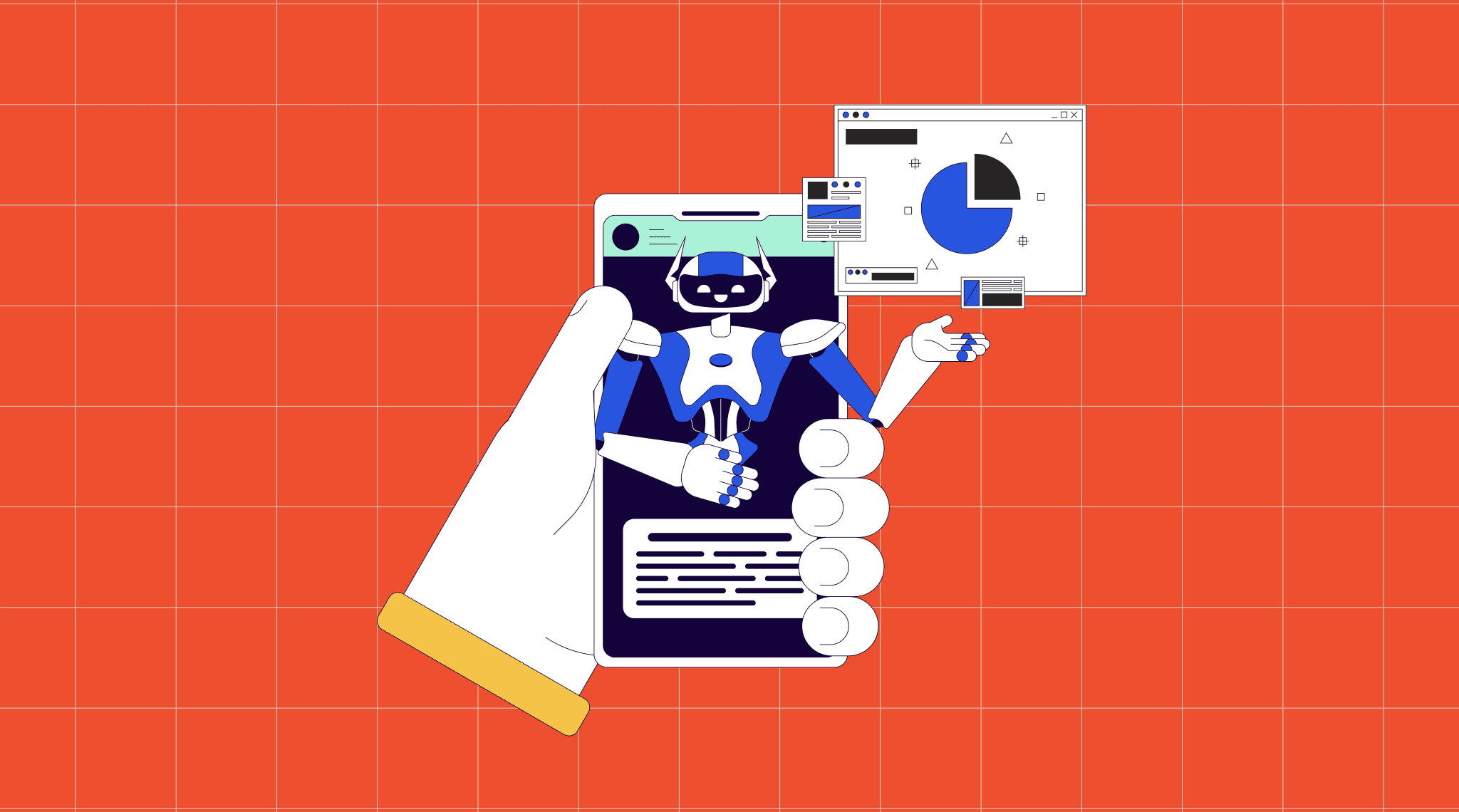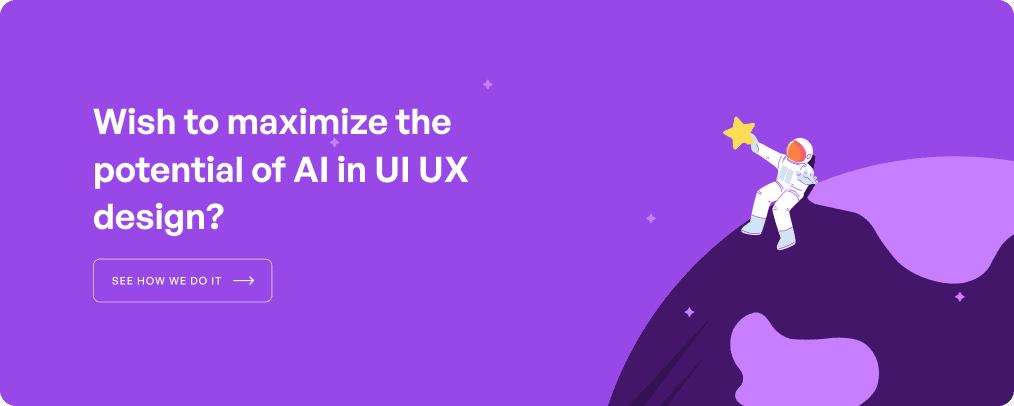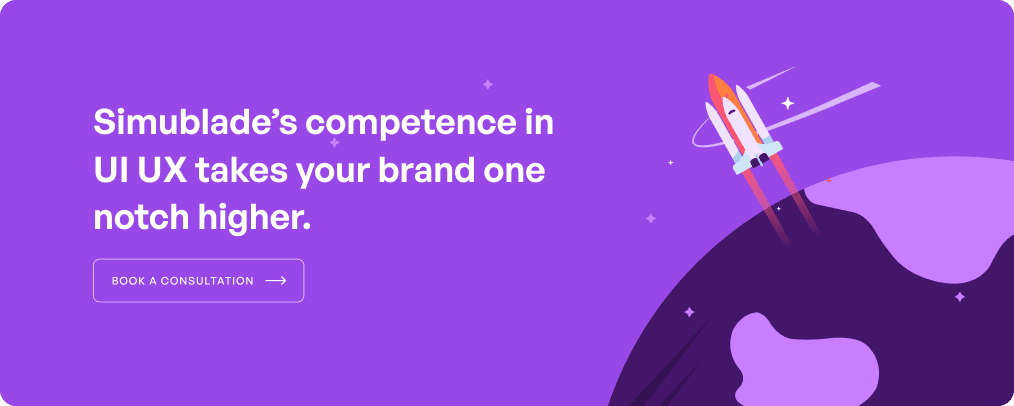Artificial intelligence and UX UI have a blossoming relationship between them. The technology is leaving an indelible mark in the design industry by boosting interactivity, visual appeal, functionalities and accessibility, and overall user experience of digital products. This has been possible since AI can remarkably amplify human design skills and capabilities that ensures a powerful impact on the outcome. If you are not yet convinced regarding the benefits of AI in design, here’s a few compelling stats.
A significant reason as to why AI has become a mandatory element to boost revenue is that 70% of millennials and 59% of GenZ in 2024 support brands that use the technology to design products and services. And why not? Using AI in UX UI design means performing tasks like image recognition, font selection, and color matching with utmost precision resulting in revolutionary products for end users.
Additionally, generative AI especially can catalyze data synthesis and offer robust ideas and feedback on design elements to bring extraordinary outputs. It can also help reveal untapped market opportunities and customer sentiments to be able to meticulously cater to diverse demands which humans alone might not be able to.
At this point, businesses like you might be interested to find out the role of AI in UI UX design and how it can free designers from typical responsibilities while helping in expanding their expertise which ultimately benefit businesses. Read on to find out how we, at Simublade, can help.
Table of contents
The role of artificial intelligence for design: an overview on how Simublade does it
UI UX is a critical part of digital product design essentials and there are several ways in which experts can make the best of AI as a tool. Here’s an exciting list for businesses to understand how outsourcing to a company like us, that extensively uses AI, would be in their best interest since it will enhance their project speed and efficiency.
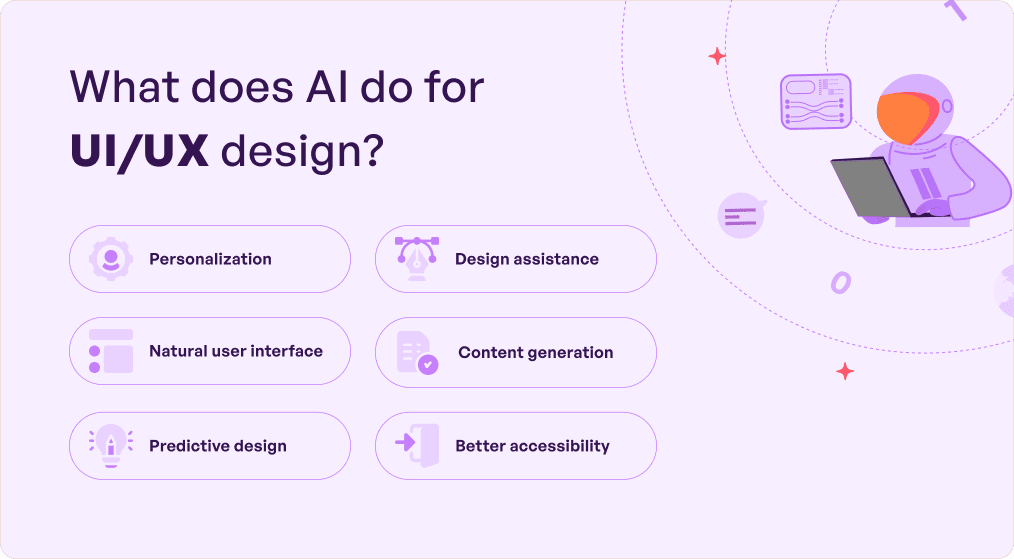
1. Personalization
We use AI for UX design to hyper-personalize the experience of the viewers by tailoring what is related to their interests. This is done by close analysis of data like user history, patterns, preferences along with incorporating ML (an AI subset) to understand who is using the platform. Apart from content, we also offer certain features like profile customizations to users. Overall, such relevant experiences resonate well with everyone, leaving them well-satisfied which brings in better business to brands.
2. Design assistance
Artificial intelligence can be used to build aesthetic, interactive, and most importantly, clean designs. This is exactly what we do – precise typography choices, photorealistic effects, vector graphics, pixel art and apt layout suggestions which are utilized by our designers. This role of AI in mobile app UI design assistance can significantly reduce mental block for professionals and frees up ample time to perform human-based tasks like design planning and strategies.
3. Natural user interface
It is a well-known fact that AI fosters intuitive and engaging interactions with machine learning and cognitive algorithms. This means gesture, sight, and voice feels more natural and the tasks inputs are quickly turned into relevant actions. It is especially true in the case of voice assistants who can be designed to talk in a friendly tone and offer relevant information, for example, reading weather updates or playing music.
4. Content generation
Our designers use AI to create content like product description and product copy suggestions which saves significant time and effort. Further, we also use it to summarize content that is quickly translated into accurate visual design. Lastly, our designers use AI tools like Acrolinx and Phrasee to analyze, optimize, and automate copy tests respectively. Wondering why else these are significant besides just developer’s ease? Well, writing strong headlines are mandatory because 60% of Google searches end up with zero clicks which is not desirable for responsible businesses.
5. Predictive design
AI is able to predict unique behavior and preferences with deep learning to create intelligent interfaces that closely meet the unique needs of end users. For instance, button placement can be done strategically to boost interactivity and usability. Further, our adept designers know the specific android vs iOS app UI design rules which help them transform user approach and build personalized experiences that are closely related to individual expectations. Overall, this elevates human experiences and boosts the chances of better ROI.
6. Better accessibility
With AI, Simublade’s designers build useful products for people with disabilities. They will start by using the technology to identify patterns and automate tasks accordingly so that the special end user does not have to do so. It is an excellent way for businesses to boost their customer base without extensive brainstorming and marketing efforts. Ultimately, this also increases the chances of staying ahead of competitors.
Given these benefits, consider collaborating with top companies like Simublade which is a leading UI UX design company in Houston. Our designs are aligned with the all growth stages of businesses since we build innovation-first software right from the scratch. High-fidelity wireframes along with icons, CTA buttons, color palette, and typography are merged with user journey and streamline the overall design process.
Challenges of integrating AI in UI UX design
While the benefits are many, there are a few challenges that come along. Let’s understand them for a clear conception.
- Biases in training data can lead to unsatisfactory user experience.
- Inability to build trust and transparency regarding the design process.
- Maintaining seamless interaction between AI and user interfaces could be tough.
- Compliance with ethical and regulatory concerns around using AI.
- Data privacy and security to avoid breach of confidential information.
However, these roadblocks can be handled with continuous monitoring, investing in interdisciplinary collaborations, and adhering to GDPR and EU AI Act can be fruitful to avoid repercussions down the line. In fact, the next paragraph talks about companies that have navigated these challenges and are successfully using AI in their design principles.
3 Big shots using artificial intelligence in user interface design
Tech giants and most big shot businesses are embracing AI in UI UX design to improve customer interaction and satisfaction with their digital products. And why not? A study found that AI deep learning models can predict behaviors at almost real-time speed with 95% precision. This is possible since they do not rely on hard coding but instead on algorithms that learn from training data. Now, let us learn how companies around the world are using AI to accelerate their UI UX design template.
Microsoft
Microsoft is scaling GenAI for its transformational force in designing new products. For instance, it launched Copilot which reflects an exceptional impact of AI on UX design since it is powered by LLM coupled with Fluent AI design language. This ultimately offers experiences based on graphical user interfaces along with relevant contextual cards. Additionally, AI is able to provide just-in-time user interface elements that are in sync with the generative flow, for instance, vocabulary prompt instead of traditional UI. Lastly, AI has been helping Microsoft to test designs more accurately with the help of accessible designs, personalized recommendations, behavior prediction, and data-driven decisions.
Adobe
American computer software company Adobe has built an AI-powered tool called Adobe Sensei GenAI which has incredible competence to blend creativity and workflow. This helps them boost innovation and deliver top-notch experience for customers.
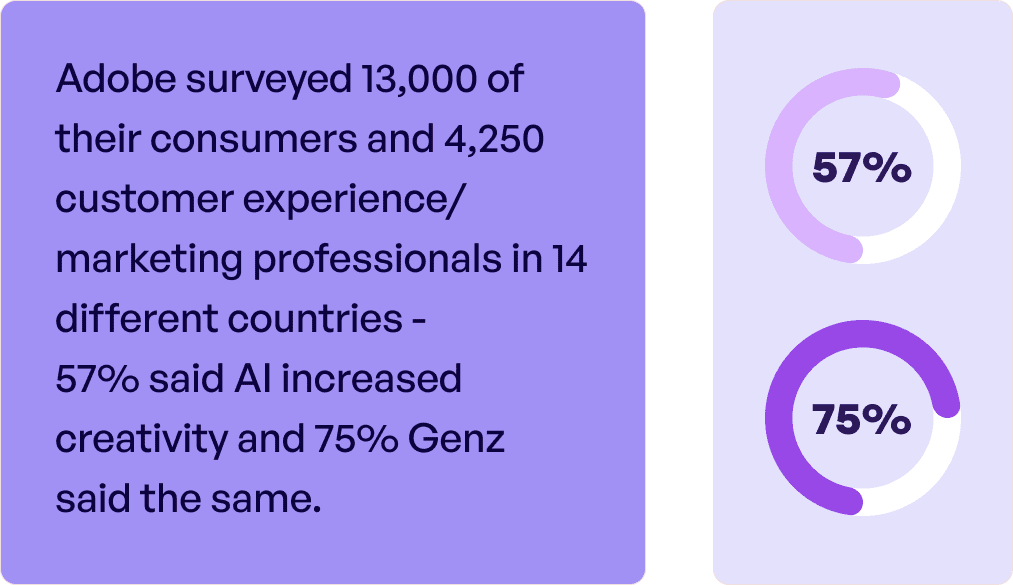 Another benefit of AI in UX design is that the technology is deeply built into Adobe’s tools for smooth integration into customers’ workflows that they are already familiar with.
Another benefit of AI in UX design is that the technology is deeply built into Adobe’s tools for smooth integration into customers’ workflows that they are already familiar with.
Lastly, AI embedded features are able to deliver fantastic productivity and precision that end-users typically expect from Adobe. The best part is that the company has solid AI ethics and principles of accountability, transparency, and responsibility to avoid mishaps.
Netflix
Have you ever noticed how Netflix offers recommendations after you have finished watching something? Well, this is possible with AI paired with ML and data science which detects preferences from viewing history and presents web series or movies which might interest you. No wonder, even ad-supported users of Netflix, as high as 70%, are watching shows here for more than 10 hours in a month. This is keeping this OTT platform ahead in the highly competitive streaming platform industry.
So, it is a good idea to partner with a trusted AI app development company like Simublade to be able to make the most of the technology in your business UI UX design. Experts here will help you build a digital-first brand with a design architecture that is future-ready. This is possible with AI-powered UX design tools like Adobe XD and Zeplin.
Will AI replace human designers?
The short answer is, no. Businesses need to understand that the unique human capabilities like creativity and psychology cannot be replaced by AI since these are a combined result of brain neurons processing that are hard to replicate.
However, what AI can do is automate a few aspects of the UI UX design. This is made possible with plenty of tools like Uizard and Khroma that can generate layouts and interface designs which are then refined with a human touch to deliver the end results.
So in short, more than a replacement, it would be about enhancing the skills of designers with the use of AI in UX designs. So, working with professionals who use AI in the right ways to improve an app’s features and visual appeal is a sensible move.
3 Unique future trends of AI in UX UI design
AI will not replace the core human activities, but no part of UI UX is immune from its touch. So, let us see what the future of this technology holds:
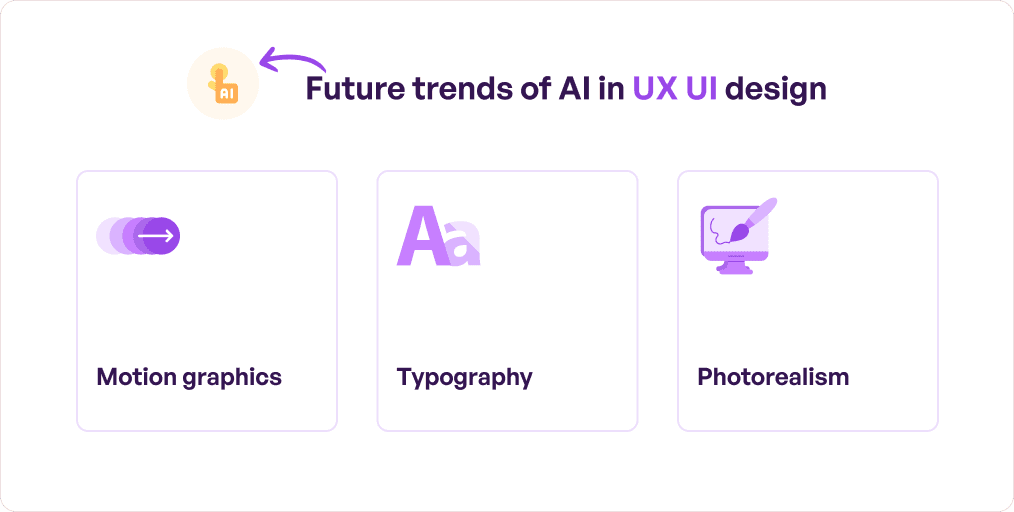
1. Motion graphics
AI in mobile app UI design is being used extensively since it has several exciting possibilities, one of which is, 3D models and animations with realistic expressions. Further, the power of AI can also be harnessed for texturing and rigging with minimal manual intervention. The benefits of this includes reduced expenses, inch-perfect motion capture, and faster production.
2. Customized typography
Typography, a cornerstone of graphic design, has seen a major upheaval with AI. The technology has sparked a transformation in this field to generate visually appealing fonts that match unique brand identities. UI designers can get content written on business apps and websites with type-specimens that are meaningful which ultimately boost visual communication. Further, AI has also enabled fonts that can adapt to different contexts like style and mood of the business page. To avoid the anxiety of overwhelming options and confusion, consider collaborating with trusted designers like the ones at Simublade.
3. Photorealism
Photorealism is when an artist studies a photograph and reproduces it as realistically as possible with heightened clarity and precision in another medium. This is exactly what AI can do but 100% success and then the original and the recreated is hard to tell apart.
The process takes less resources and time yet the quality of the hyper-realistic image is never compromised. This allows artists to transcend the boundaries of creativity and achieve top notch images with a simple text prompt.
In conclusion, the use of AI in UX UI design will save businesses thousands of dollars, time, and effort. Further, it is an excellent way to stay on the forefront of customers’ minds since visual appeal with consistency and balance in information captures attention. So, it is a good idea to work with trusted designers who understand the wide capabilities of AI technologies like machine learning and computer vision and put them to right use for your benefit.
FAQs
Q. How does AI improve the user experience in design?
Ans. AI and UX design go hand in hand to predict qualitative trends, understand behavioral patterns, and ultimately, personalize high-quality user experiences. This builds brand credibility and encourages higher engagement rates.
Q. What are the benefits of using AI in UX/UI design?
Ans. AI-enhanced user research, AI-powered customizations, better conversions, pattern recognition, real-time collaboration, and predictive analytics are the top benefits of AI in UX UI design.
Q. What are the future trends of AI in UX/UI design?
Ans. AI is expected to power photorealism, character consistency, typography, motion graphics, and deep fakes in the near future which will add life to creativity.
Q. How can AI improve the efficiency of the UX/UI design process?
Ans. It is done by more precise user research, automated prototype testing and creation, and ultimately offers detailed insights for designers to make right divisions.
Q. What are the challenges of integrating AI in UX design?
Ans. Data privacy, ensuring top-quality training data, algorithmic bias, and technology complexities are the top challenges of the use of AI in UX design.


